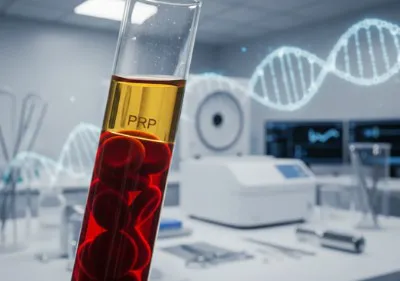PRP therapy has been called many things - the vampire facial, the athlete's secret weapon, even the future of regenerative medicine. But beneath the buzzwords is a simple truth: your body already holds the tools to heal, repair, and restore. The challenge is knowing how to unlock that potential in a safe, effective way.
Here is the problem: ageing, thinning hair, and even slow recovery from injury are not just cosmetic issues. They creep into confidence, energy, and how you show up every day. You may have tried serums, supplements, or even considered stronger interventions, only to be left wondering if there is something in between - something natural yet clinically backed. That space, the middle ground between "do nothing" and "go under the knife," is exactly where PRP sits.
PRP works by taking a small sample of your blood, concentrating the platelets, and reintroducing them where repair is needed. Those platelets are not just clot-formers - they are packed with growth factors that tell your skin to produce collagen, your scalp to stimulate follicles, and your tissues to rebuild. The result? Subtle but real changes that feel like you, only fresher, stronger, and more resilient.
This guide unpacks exactly what PRP is, how it works, and who it helps - so you can decide if this natural therapy deserves a place in your beauty or wellness journey.
So, what exactly is PRP and why are more people turning to it?
Our Preferred Partner - Cellenis PRP
Not all PRP systems are created equal — and the quality of preparation makes a big difference to outcomes. That’s why many leading clinics choose Cellenis® PRP, a clinically validated system designed to deliver highly concentrated, pure platelet-rich plasma every time. By using a closed, sterile kit and advanced centrifugation, Cellenis® ensures consistency, safety, and optimal platelet yield — the growth factors your skin, hair, or tissue rely on for regeneration. Whether the goal is brighter skin, fuller hair, or faster recovery, Cellenis® PRP offers practitioners and patients confidence in both the science and the results.
What Is PRP? Understanding The Basics
You're not alone if you’ve encountered the term PRP in a conversation about skin health or hair restoration. Platelet-Rich Plasma therapy has rapidly gained attention as a natural, minimally invasive treatment that leverages the body’s own regenerative powers.
PRP: A Natural Approach to Healing and Rejuvenation
PRP, or Platelet-Rich Plasma, is a treatment that involves using a concentrated portion of your blood to support healing, repair, and cellular regeneration. While it’s now popular in aesthetics, its roots lie in medicine, particularly in orthopaedics and sports injury recovery.
- What does PRP actually contain?
PRP is derived from your blood and contains a high concentration of platelets suspended in plasma. These platelets are rich in growth factors - proteins that stimulate tissue repair, collagen production, and cell renewal. Clinical studies have confirmed that Platelet-Rich Plasma (PRP) promotes cellular regeneration and collagen synthesis due to its high growth factor concentration, supporting its use in regenerative medicine. - How was it first used?
Initially developed to help heal tendons and ligaments in surgical and sports medicine settings, PRP gained momentum in the early 2000s for use in hair loss, skin rejuvenation, and scar minimisation. - Why do platelets matter so much?
Platelets play a vital role in your body’s natural repair mechanisms. When tissue is damaged, platelets rush to the site and release growth factors that promote healing. PRP therapy harnesses this process and delivers it where it’s needed most. - Is it really “natural”?
Yes - PRP is entirely autologous, meaning it comes from your own body. Unlike dermal fillers or synthetic treatments, no foreign substances are involved, which reduces the risk of allergic reaction or rejection. - Who is PRP suitable for?
While it’s not suitable for everyone, PRP can benefit individuals seeking subtle, progressive skin tone, texture, elasticity, or hair density results. It’s particularly appealing to those seeking non-surgical options grounded in biology rather than chemicals. - Are all PRP treatments the same?
No, not all PRP treatments are the same. There are different types of PRP (leukocyte-rich vs. leukocyte-poor), and the quality of preparation can significantly impact results. A skilled clinician will personalise the process based on your unique treatment goals and the condition of your skin or hair, ensuring you receive the most suitable and effective treatment.
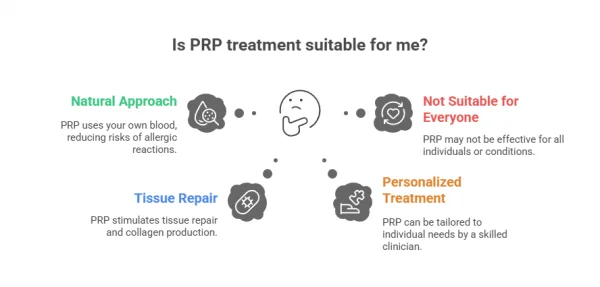
PRP is not a miracle cure but a promising, science-backed option for those looking to rejuvenate naturally. As research continues, its range of applications is expanding — from aesthetics to pain management and beyond.
To find out if PRP could support your goals, book a consultation or explore our guides on PRP for skin and hair, .
How PRP Is Made: From Blood Draw To Application
One of the most fascinating aspects of PRP therapy is how it harnesses your own biology for rejuvenation and repair. But what actually happens between the blood draw and the final injection? Understanding the preparation process can help you feel more confident in your treatment choices.
The Step-by-Step Process of Preparing PRP
Creating Platelet-Rich Plasma is a precise, clinical process designed to extract and concentrate the most regenerative components of your blood.
- Step 1: A simple blood draw
Depending on the treatment area, your clinician will draw a small blood sample, usually around 10–20 ml. It’s no different from a routine blood test in terms of discomfort. - Step 2: Centrifugation
The sample is placed in a specialised centrifuge and spun at high speed. This separates the blood into layers: red blood cells, platelet-poor plasma, and the golden layer of platelet-rich plasma. - Step 3: Extracting the PRP
The platelet-rich portion is carefully drawn off. This layer contains a high concentration of growth factors that stimulate tissue healing, collagen synthesis, and cell regeneration. - Step 4: Customisation
Depending on your treatment goal, your clinician may choose a specific PRP formulation, such as leukocyte-rich or leukocyte-poor. This decision can affect inflammation levels and healing time, especially for sensitive skin or scalp applications. - Step 5: Immediate application
Once prepared, PRP is used straight away. It may be injected directly into the skin or scalp, applied topically during microneedling, or used in joint or tendon therapies. For optimal results, PRP is always freshly prepared and never stored.
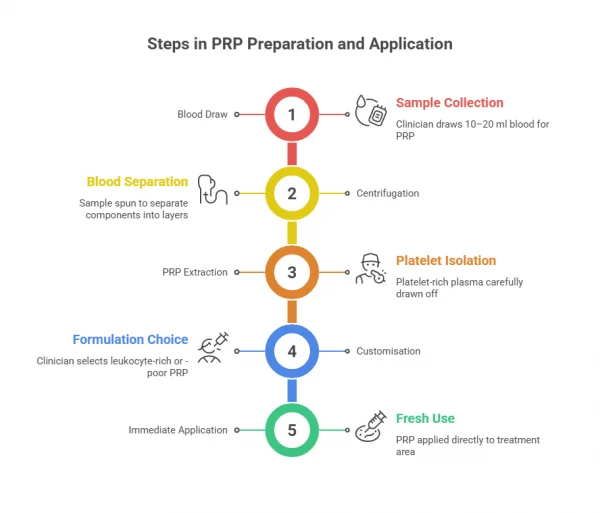
The procedure usually takes 30 to 45 minutes and is performed in a clean, sterile environment. While it’s grounded in complex biochemistry, PRP therapy is ultimately a straightforward, low-risk process when carried out by a trained professional.
Who Can Benefit From PRP Therapy?
Platelet-Rich Plasma (PRP) therapy isn’t a one-size-fits-all solution, but it offers real potential for people seeking natural, regenerative results across medical and aesthetic concerns. If you're looking for subtle enhancement or recovery support without going down the surgical route, PRP may be worth exploring.
A Targeted Solution for Skin, Hair, and Healing
PRP therapy is versatile - and that's part of its appeal. Here’s a breakdown of who typically benefits most from PRP:
- Individuals with early signs of ageing
If you’re noticing fine lines, loss of skin elasticity, or a dull complexion, PRP can help stimulate collagen production, improving texture and tone over time. Recent evidence highlights PRP’s ability to reduce wrinkles and improve dermal structure. - Women and men experiencing hair thinning or mild-to-moderate hair loss.
PRP is widely used to treat androgenetic alopecia. Reactivating dormant hair follicles can slow shedding and promote regrowth, especially when started early. Studies have shown that PRP significantly increases hair density and follicle thickness in androgenetic alopecia patients. - People with acne scarring or uneven skin texture
PRP supports skin regeneration and works particularly well when combined with treatments like microneedling to improve post-acne marks and mild scarring. - Those recovering from soft tissue injuries or surgery
Popularised initially in orthopaedics, PRP can accelerate healing in tendons, ligaments, and joints. It's often used in sports medicine to manage pain and speed recovery. - Patients managing osteoarthritis or joint pain
PRP injections into the knee or other joints may reduce inflammation and improve mobility, especially for people in the early stages of degenerative conditions. - Anyone seeking a natural alternative to synthetic injectables
Because PRP uses your blood, it’s often chosen by patients who prefer autologous (self-sourced) treatments with minimal risk of allergic reaction. - Those wanting to maintain results post-treatment
PRP can also be a powerful follow-up or maintenance option after laser treatments, fillers, or surgery to support long-term results and tissue health.
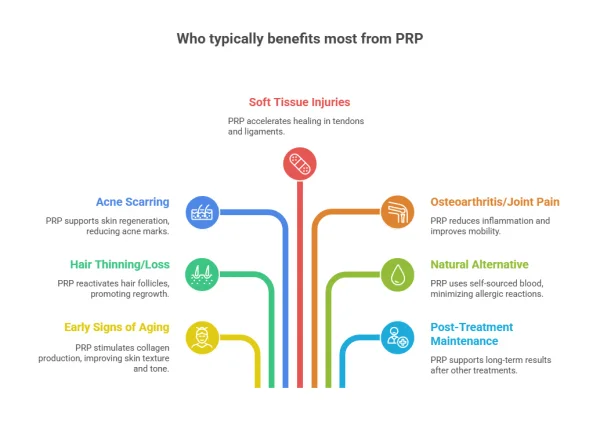
While PRP is suitable for many, it’s not recommended during pregnancy, for people with certain blood disorders or cancers, or where there is active infection. Always consult a qualified clinician to determine if it's the right approach for your health profile and goals.
PRP therapy offers a tailored, minimally invasive solution for those looking to age well, recover faster, or optimise their body’s natural repair mechanisms.
PRP Vs. Other Treatments: How Does It Compare?
With so many aesthetic and wellness treatments available, it’s natural to wonder where Platelet-Rich Plasma (PRP) fits. Whether you're weighing up PRP vs fillers, considering it instead of laser, or exploring options for joint pain or hair loss, understanding the pros and cons is essential for making the right choice.
Comparing PRP to Common Alternatives
PRP offers a unique, biology-based approach — but how does it stack up against more traditional or synthetic treatments?
- PRP vs Dermal Fillers
Fillers deliver immediate volume by physically plumping lines and hollow areas. PRP, by contrast, stimulates your body to rebuild collagen gradually over time. While fillers give instant results, PRP supports long-term skin health and a natural glow. - PRP vs Microneedling Alone
Microneedling triggers skin regeneration by creating micro-injuries. When combined with PRP, results are often enhanced due to the added infusion of growth factors. PRP can also reduce recovery time and amplify the impact on texture and tone. - PRP vs Laser Resurfacing
Laser treatments (like fractional CO2) use heat to target skin concerns such as pigmentation and fine lines. PRP is gentler, with less downtime, and works through biological stimulation rather than controlled trauma. They’re often used together for compounded benefits. - PRP vs Steroid Injections (for joints)
Steroids reduce inflammation quickly but may degrade tissue over time with repeated use. PRP supports healing by encouraging tissue regeneration — ideal for those seeking a long-term, restorative solution to joint or tendon pain. - PRP vs Hair Loss Medications (e.g. minoxidil)
PRP delivers growth factors directly to hair follicles, potentially reactivating them. Medications like minoxidil work systemically or topically to slow hair loss. Combining PRP with traditional hair loss treatments can improve outcomes. - PRP vs Surgery
While PRP won’t replace surgical intervention where structural change is needed, it can delay the need for surgery or support recovery post-op. It’s a valuable tool in both prevention and enhancement.
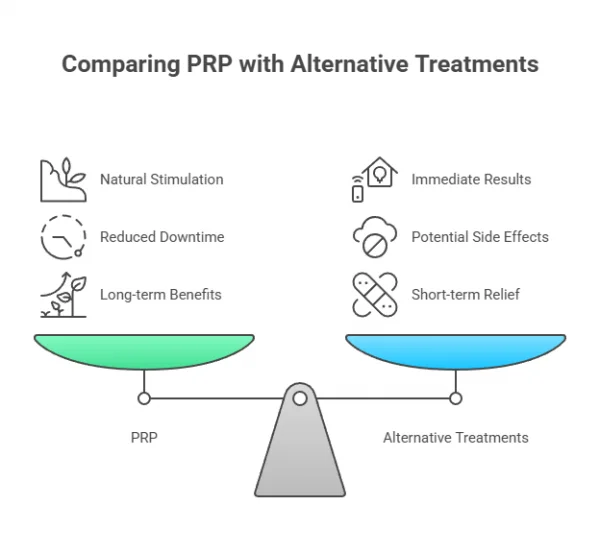
No single treatment suits everyone, but PRP stands out for its ability to work with your body rather than against it. It may not offer instant transformation, but it often delivers more natural-looking, sustainable results over time.
Is PRP Right For You?
Platelet-Rich Plasma (PRP) therapy has become popular among those seeking natural, non-surgical treatments for skin, hair, and joint concerns. But before committing, it’s essential to understand whether PRP aligns with your goals, health profile, and expectations.
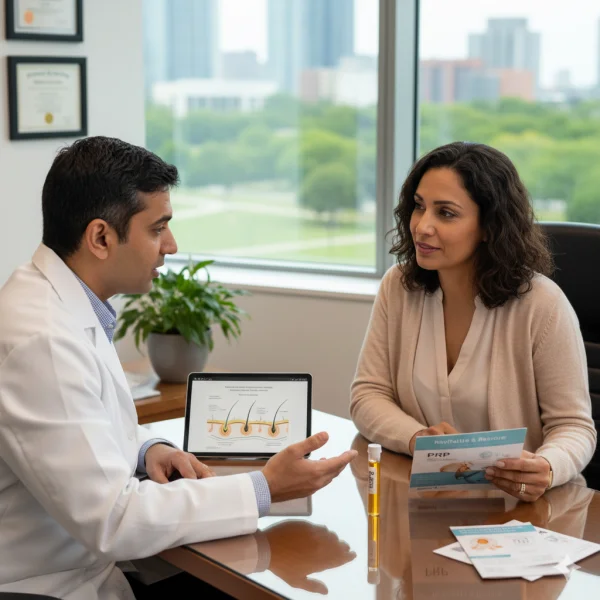
Matching PRP Therapy to Your Needs and Lifestyle
Here’s what to consider when deciding if PRP is a suitable option for you:
- You’re looking for subtle, progressive improvement
PRP isn’t an instant fix. It works gradually by stimulating your body’s natural healing response, making it ideal for those who want gentle, visible enhancement over time. - You prefer natural or minimally invasive treatments.
PRP uses your blood, with no synthetic substances. If you’re cautious about injectables or cosmetic surgery, PRP offers a biologically harmonious alternative. - You’re dealing with early signs of ageing or mild-to-moderate hair loss.
PRP is most effective when used as a preventative or restorative tool — think fine lines, loss of skin firmness, or thinning hair, rather than deep wrinkles or advanced balding. - You want to support post-treatment recovery.
PRP is commonly used to accelerate healing after microneedling, laser treatments, and even surgery. It complements rather than replaces other therapies. - You’re willing to invest in a series of treatments.
Multiple PRP sessions are often required for optimal results, typically spaced a few weeks apart, with occasional maintenance sessions depending on your goal. - Your health profile is compatible.
PRP may not be suitable if you’re pregnant, have certain blood disorders, active infections, or a history of cancer. Your clinician will conduct a thorough assessment before proceeding. - You value holistic, regenerative wellness.
If you’re already engaged in a healthy lifestyle and are seeking to support long-term tissue vitality, PRP can be a powerful ally in your broader self-care strategy.
There’s no one-size-fits-all answer, but PRP can be a compelling option for people who want real results without drastic measures.
Conclusion
PRP therapy isn’t just a trend - it reflects a growing desire for treatments that work with the body, not against it. Whether you’re seeking to restore your skin’s natural glow, stimulate hair growth, or support recovery from injury, PRP offers a gentle, science-led approach that puts your biology at the centre of your care.
The key takeaway? You don’t need to choose between doing nothing and going ‘all in’ with invasive procedures. PRP sits confidently in the middle ground: clinically backed, naturally derived, and tailored to your individual needs.
Suppose you’re curious about how PRP could fit into your aesthetic or wellness routine. In that case, the next step is simple - speak to a qualified practitioner who can guide you through your options with clarity, care, and clinical insight. Your body has more potential than you might realise - and PRP is designed to help unlock it.
Your PRP Questions
Real Questions from Real People — Answered
Straightforward answers to the questions people like you are asking right now about PRP.

Cost of PRP treatment for hair?
Please give the cost and how many sessions needed to prevent complete hair loss and new hair
Hair loss.
Dear reader My name is Mo I'm interested to have prp treatment in your clinic and I have some questions How many ml of prp i will get injured ? Did you analyse prp There any other services after the treatment is done Thank you
To view all the PRP questions, please click here.
Or click here to ask your own question.
Find A Verified Clinic
Trusted PRP Experts, Local to You
Easily connect with qualified, verified professionals for safe, reliable treatment.

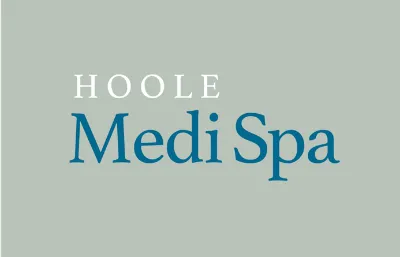
Hoole Medispa
51 Hoole Road, Hoole, Chester, CH2 3NH
Welcome to Hoole Spa and Aesthetics situated in the beautiful Grade II listed building in the suburbs of Hoole, Chester.
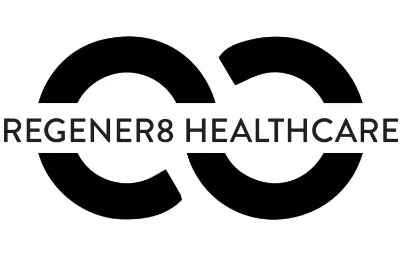
Regener8 Healthcare
42 Hewell Road, Barnt Green, Birmingham, B45 8NF
Regener8 Healthcare brings together a team of highly qualified specialists, who are all passionate about aesthetics, longevity and wellness treatments.
To find a PRP clinic near you, please click here.

